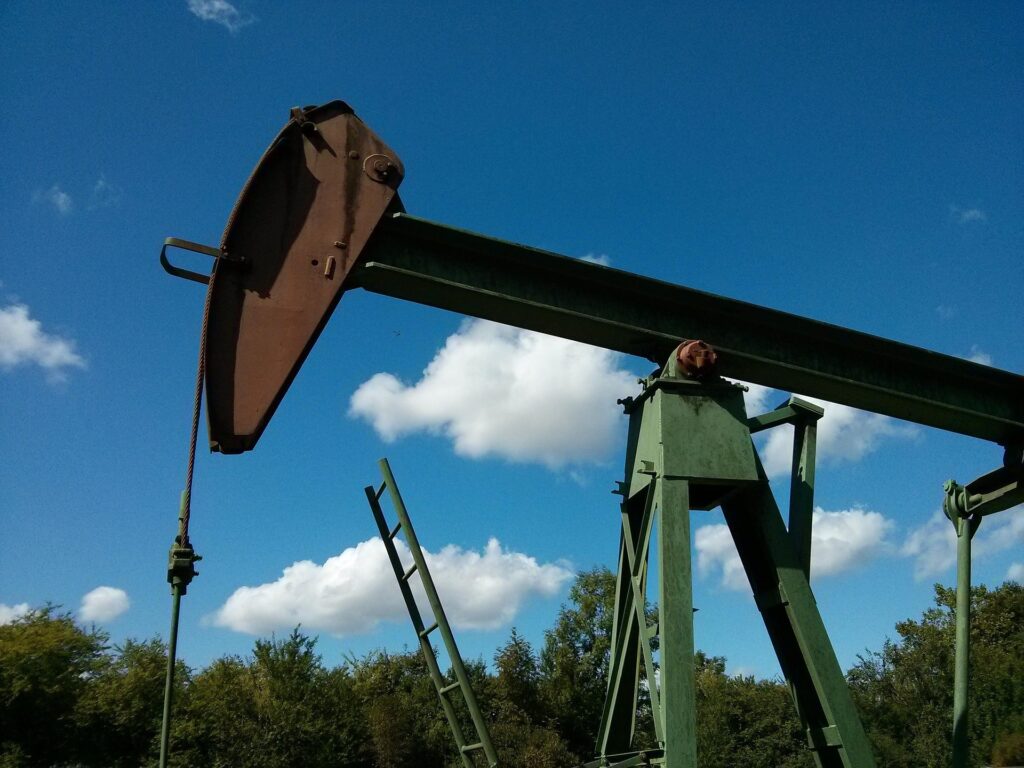US oil production has surged to an all-time high of nearly 21 million barrels per day in May 2025, marking 50% growth in just four years. Despite a five-year low in active fracking crews, American shale producers are drilling faster, extending well reach, and cutting costs to achieve record output. This in-depth analysis explores the historical journey, technological advances, and global impact of the US’s energy dominance.
US Oil Production Hits Record High in 2025
US Oil Production Hits Record High:The United States has reached a historic milestone in its energy sector. In May 2025, American total oil liquids production surged to an all-time high, touching nearly 21 million barrels per day (b/d). This new record underscores the US’s position as the world’s largest oil producer and signals a resilience that many analysts did not anticipate in the face of operational constraints and low prices.
According to the latest figures, US total oil liquids output has experienced a dramatic rise over the past four years, registering an impressive 50% growth in daily production. This expansion is particularly striking when viewed against the backdrop of a significantly reduced number of active fracking crews — a metric that typically serves as a proxy for drilling activity.
From Stability to Surge: A Historical Perspective
US Oil Production Hits Record High:The story of US oil production is one of long-term evolution. From 1973 to the mid-2000s, the nation’s total oil liquids production fluctuated within a relatively narrow band, often declining due to maturing fields, reduced exploration, and shifts in the global oil trade. During the 1970s oil crises, the US ramped up production to mitigate dependence on foreign imports, but by the late 1980s, production levels had entered a prolonged decline.
The early 2000s marked the low point, with total output hovering near 6 million b/d. This downward trend seemed irreversible until the shale revolution took hold in the late 2000s. The introduction of advanced hydraulic fracturing and horizontal drilling techniques unlocked vast reserves of tight oil from formations such as the Bakken, Eagle Ford, and Permian Basin.
Between 2009 and 2019, US production entered a steep upward trajectory, surpassing 12 million b/d by the end of the decade. Even the temporary slump caused by the COVID-19 pandemic in 2020 — when prices collapsed and demand plummeted — could not halt the momentum for long. Production rebounded rapidly, and the post-pandemic recovery set the stage for the record highs being observed today.
Recent Gains Despite Operational Declines
US Oil Production Hits Record High:What makes the 2025 figures remarkable is that they have been achieved in an environment of reduced drilling capacity. The number of active fracking crews in the US has almost halved since 2022, dropping to just 163 — the lowest level in five years. Traditionally, such a decline would be expected to translate into lower output.
Yet, US shale producers have managed to sidestep this limitation through a combination of technological innovation and operational efficiency. Wells are now being drilled faster than before, allowing more projects to come online in less time. The reach of horizontal wells has also been extended deeper into rock formations, enabling companies to tap into previously inaccessible reserves. Moreover, the industry has focused heavily on cost-cutting measures, making production economically viable even at lower oil prices.

Year-on-Year Gains in 2025
US Oil Production Hits Record High:The first five months of 2025 have delivered further proof of sustained growth. Average US total petroleum output during this period stood at 20.5 million b/d, up from approximately 19.8 million b/d during the same period in 2024. This year-on-year increase is significant, given the maturity of many producing fields and the reduced number of active rigs.
For context, production gains of this magnitude in the past typically coincided with high oil prices that incentivized new drilling. In contrast, the current growth is happening despite relatively low market prices, challenging conventional assumptions about the relationship between price signals and supply expansion.
Implications for the Global Energy Landscape
US Oil Production Hits Record High:The US’s record-breaking output has broad implications for global energy markets and geopolitics. As the world’s largest oil producer, the US plays a central role in shaping global supply and influencing prices. Increased US production could help stabilize markets in times of geopolitical tension, such as conflicts in the Middle East or supply disruptions from major exporters.
It also strengthens the US’s position in trade negotiations, as high output reduces dependency on foreign energy and allows for increased exports of crude and refined products. In recent years, the US has become a key supplier to Europe and parts of Asia, displacing barrels from traditional suppliers like Russia and OPEC members.
Technological Resilience in Shale Production
US Oil Production Hits Record High:The efficiency gains in US shale operations are a case study in technological adaptation. Drilling speed improvements mean that companies can complete wells in fewer days, reducing labor and equipment costs. Extended-reach laterals — where horizontal drilling arms extend further underground — access more oil-bearing rock from a single well pad. This reduces surface disturbance, regulatory delays, and overall cost per barrel.
Additionally, enhanced completion techniques, such as precision fracking and optimized fluid injection, increase recovery rates. By extracting more oil from each well, producers maximize output without proportionally increasing costs. These advances are critical in an era when many of the easiest-to-access shale deposits have already been tapped.
Balancing Growth and Sustainability
US Oil Production Hits Record High:While the record output is a triumph for the US energy sector, it also raises questions about sustainability and long-term strategy. Continuous drilling at this pace requires careful management of reserves to avoid overproduction that could lead to rapid declines in field productivity.
Moreover, the environmental implications of sustained high oil output cannot be ignored. Hydraulic fracturing has been criticized for its water usage, potential groundwater contamination risks, and contribution to greenhouse gas emissions. As global climate commitments tighten, the industry will face increasing pressure to reconcile production goals with environmental responsibility.
Conclusion: A New Era for US Oil
US Oil Production Hits Record High:The United States’ ability to hit an all-time production high in May 2025 — reaching nearly 21 million b/d — reflects not just the abundance of its resources but the adaptability of its oil sector. With a 50% increase in daily production over the last four years, and significant year-on-year growth despite reduced drilling capacity, the US has shown that efficiency gains and technological innovation can sustain growth even under challenging conditions.
This achievement cements America’s role as a dominant force in global energy markets, capable of influencing prices, stabilizing supply, and outpacing rivals. The challenge ahead will be maintaining this momentum while addressing environmental concerns and ensuring the longevity of its resource base. If current trends continue, the US oil story in the coming decade may be one of both record production and unprecedented transformation.

